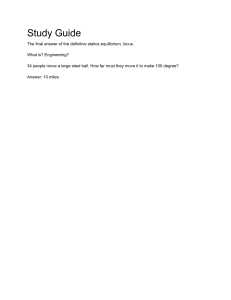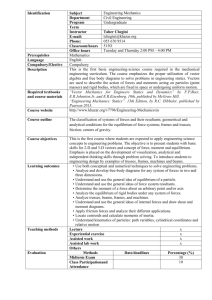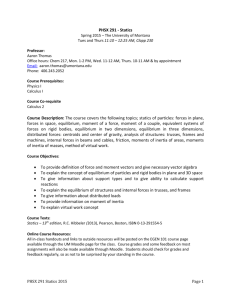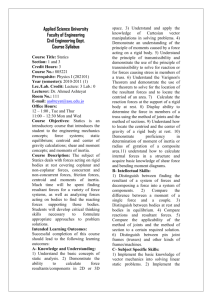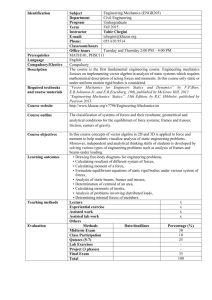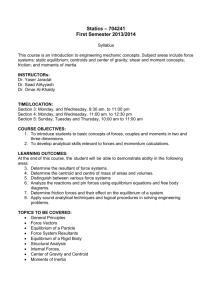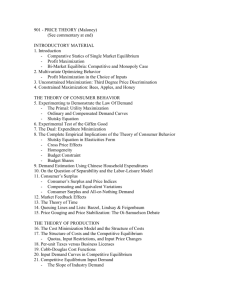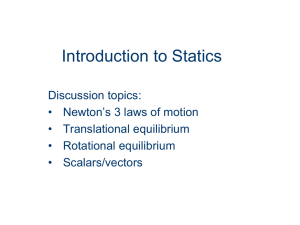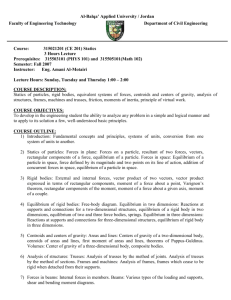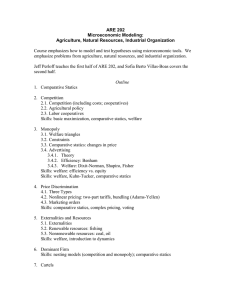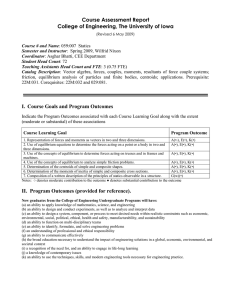COURSE PROFILE Course Number : CE102 Course Title : Statics
advertisement
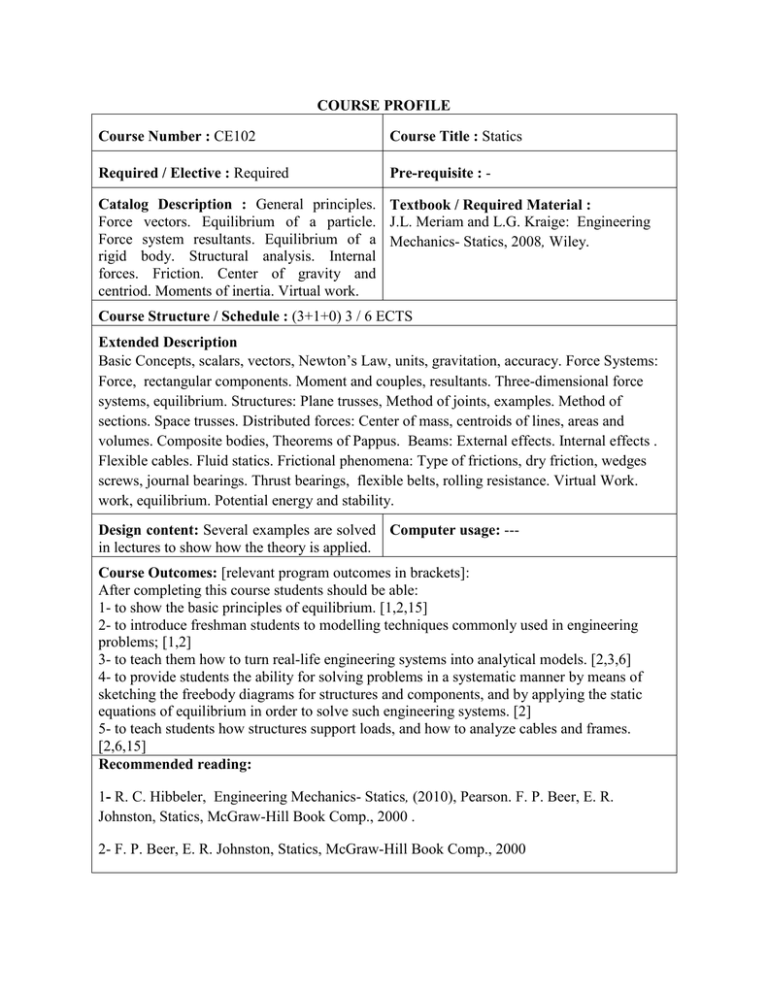
COURSE PROFILE Course Number : CE102 Course Title : Statics Required / Elective : Required Pre-requisite : - Catalog Description : General principles. Textbook / Required Material : Force vectors. Equilibrium of a particle. J.L. Meriam and L.G. Kraige: Engineering Force system resultants. Equilibrium of a Mechanics- Statics, 2008, Wiley. rigid body. Structural analysis. Internal forces. Friction. Center of gravity and centriod. Moments of inertia. Virtual work. Course Structure / Schedule : (3+1+0) 3 / 6 ECTS Extended Description Basic Concepts, scalars, vectors, Newton’s Law, units, gravitation, accuracy. Force Systems: Force, rectangular components. Moment and couples, resultants. Three-dimensional force systems, equilibrium. Structures: Plane trusses, Method of joints, examples. Method of sections. Space trusses. Distributed forces: Center of mass, centroids of lines, areas and volumes. Composite bodies, Theorems of Pappus. Beams: External effects. Internal effects . Flexible cables. Fluid statics. Frictional phenomena: Type of frictions, dry friction, wedges screws, journal bearings. Thrust bearings, flexible belts, rolling resistance. Virtual Work. work, equilibrium. Potential energy and stability. Design content: Several examples are solved Computer usage: --in lectures to show how the theory is applied. 1234- Course Outcomes: [relevant program outcomes in brackets]: After completing this course students should be able: 1- to show the basic principles of equilibrium. [1,2,15] 2- to introduce freshman students to modelling techniques commonly used in engineering problems; [1,2] 3- to teach them how to turn real-life engineering systems into analytical models. [2,3,6] 4- to provide students the ability for solving problems in a systematic manner by means of sketching the freebody diagrams for structures and components, and by applying the static equations of equilibrium in order to solve such engineering systems. [2] 5- to teach students how structures support loads, and how to analyze cables and frames. [2,6,15] Recommended reading: 1- R. C. Hibbeler, Engineering Mechanics- Statics, (2010), Pearson. F. P. Beer, E. R. Johnston, Statics, McGraw-Hill Book Comp., 2000 . 2- F. P. Beer, E. R. Johnston, Statics, McGraw-Hill Book Comp., 2000 Teaching Methods : Lectures, PS hours, homework Assessment Methods: [Related to course outcomes] 2 Midterm Exams [1, 2] (Average) 40% Homework [1, 2, 3, 4, 5] (Average) 10% 3 Quiz (1,2,3) (Average) 05% Attendance 05% Final Exam [1] 40% Student workload: Preparatory study 60 hrs Lectures, discussions 56 hrs Homeworks 20 hrs Midterms, final, lab evaluation 14 hrs TOTAL ……………………………… 150 hrs = 25 x 6 ECTS Prepared by : Esin Inan Revision Date : 15/6/2012
